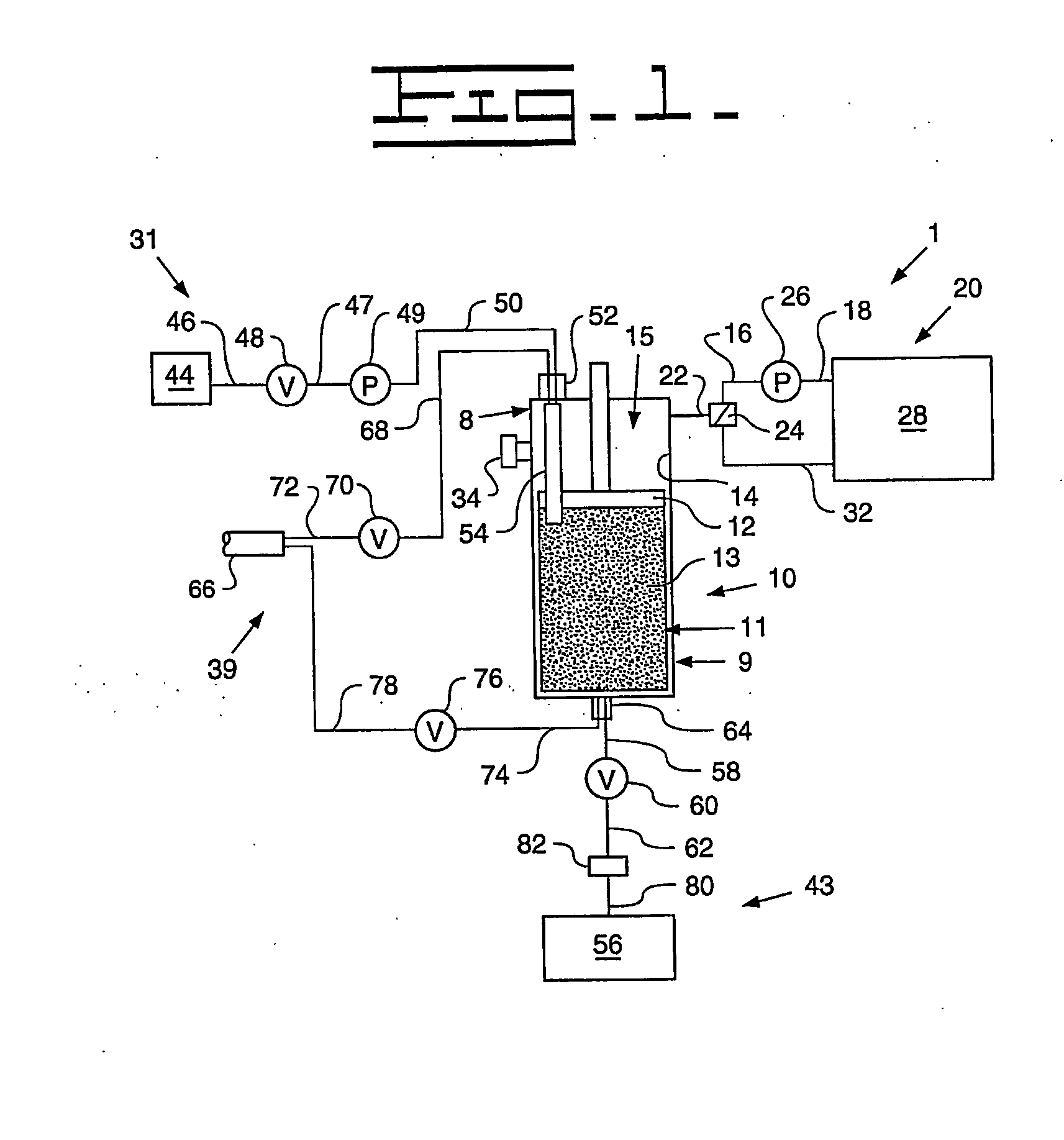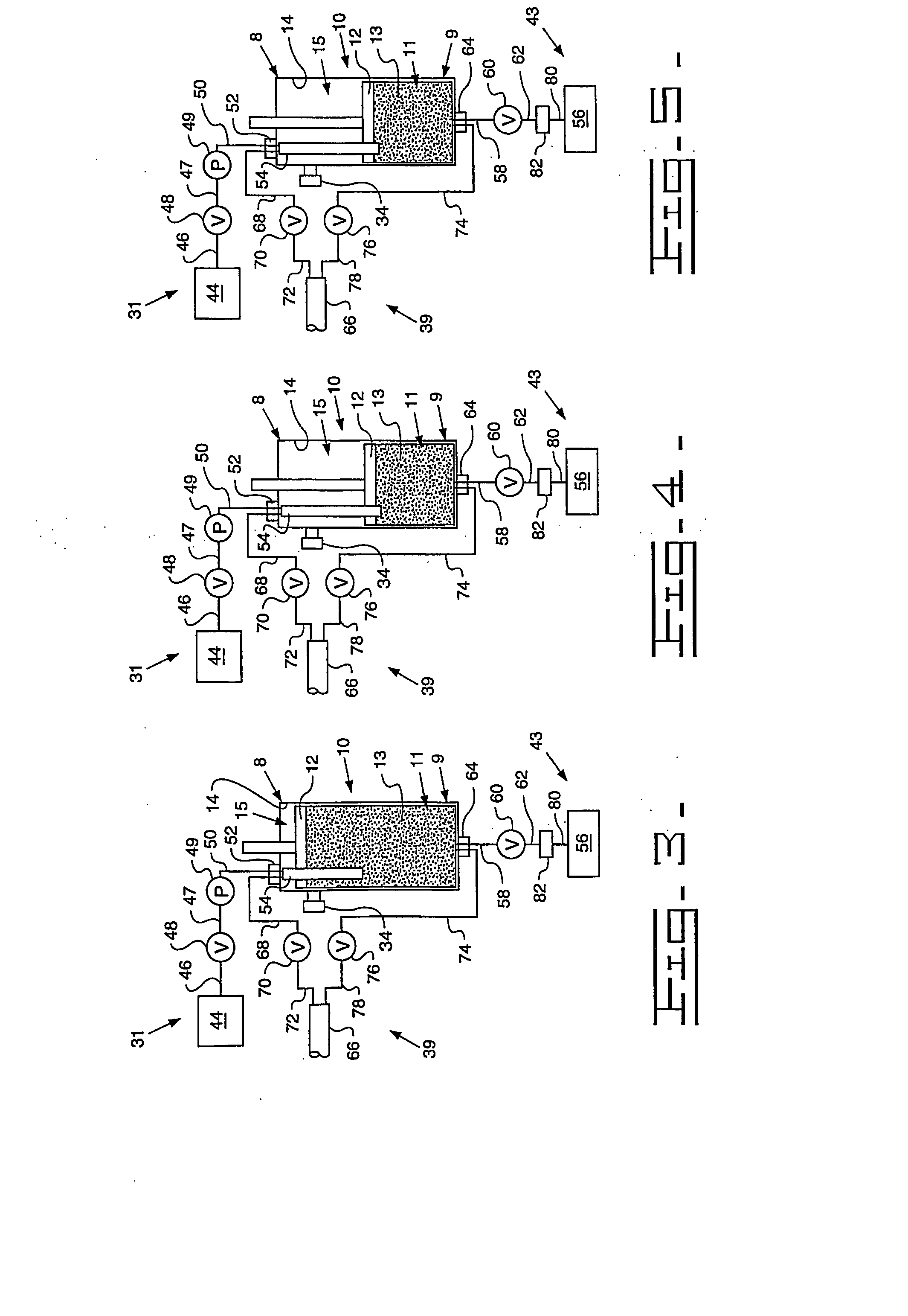Method and system for separation and purification of at least one narcotic alkaloid using reverse phase preparative chromatography
a technology of reverse phase and purification method, which is applied in the field of industrial separation and purification of at least one narcotic alkaloid using reverse phase preparative chromatography, can solve the problems of carbon irreversibly adsorbing alkaloids, significant yield loss, and yield loss in the supernatant, and achieves the effect of increasing throughpu
- Summary
- Abstract
- Description
- Claims
- Application Information
AI Technical Summary
Benefits of technology
Problems solved by technology
Method used
Image
Examples
example 1
[0091] A Turkish concentrated poppy straw (CPS) was utilized as the crude source. The crude alkaloid solution that was utilized included 89.0 area % morphine, 5.4 area % codeine and 0.6 area % oripavine. The objective was to recover both morphine and codeine with high yields. The stationary phase media 13 utilized was silica with carbon eight (C8) ligands, preferably 20 micrometers (787.4 microinches) spherical particles with 120 Angstroms (0.47 microinches) pores. The details regarding the preparative chromatography column 10 utilized were previously described above. The mobile phase utilized for recovery of the morphine and codeine was an aqueous solution that included water with the addition of acetic acid to bring the pH to between 3 and 4. The removal of colors and impurities from the stationary phase media 13 was accomplished with a solution of 50% acetonitrile and 50% dilute acetic acid that has a pH of between 3 and 4. The flow direction of the initial mobile phase was from ...
example 2
[0093] A Tasmanian concentrated poppy straw (CPS) was utilized as the crude source. The crude alkaloid solution that was utilized included 95.8 area % thebaine, 0.9 area % oripavine, 0.6 area % codeine and 0.4 area % 10-hydroxythebaine. The objective was to recover thebaine with a high yield and less than 0.10 area % each of oripavine, codeine, and 10-hydroxythebaine. The stationary phase media 13 utilized was silica with carbon eight (C8) ligands, preferably 20 micrometers (787.4 microinches) spherical particles with 120 Angstroms (0.47 microinches) pores. The details regarding the preparative chromatography column 10 utilized were previously described above. The mobile phase utilized for initial thebaine recovery and eluates of impurities was an aqueous solution that included water with the addition of acetic acid to bring the pH to between 3 and 4. The recovery of thebaine utilized a mobile phase that included 10-12% acetonitrile solution with an aqueous solution that includes 88...
example 3
[0095] An Australian concentrated poppy straw (CPS) was utilized as the crude source. The crude alkaloid solution that was utilized included 96.5 area % morphine and 2.0 area % oripavine. The objective was to recover morphine with a high yield with little or no oripavine. The stationary phase media 13 utilized was silica with carbon eight (C8) ligands, preferably 20 micrometers (787.4 microinches) spherical particles with 120 Angstroms (0.47 microinches) pores. The details regarding the preparative chromatography column 10 utilized were previously described above. The mobile phase utilized for recovery of the morphine and codeine was an aqueous solution that included water with the addition of acetic acid to bring the pH to between 3 and 4. The removal of colors and impurities from the stationary phase media 13 was accomplished with a solution of 50% acetonitrile and 50% dilute acetic acid that has a pH of between 3 and 4. The flow direction of the initial mobile phase was from top-...
PUM
| Property | Measurement | Unit |
|---|---|---|
| Temperature | aaaaa | aaaaa |
| Temperature | aaaaa | aaaaa |
| Temperature | aaaaa | aaaaa |
Abstract
Description
Claims
Application Information
 Login to View More
Login to View More - R&D
- Intellectual Property
- Life Sciences
- Materials
- Tech Scout
- Unparalleled Data Quality
- Higher Quality Content
- 60% Fewer Hallucinations
Browse by: Latest US Patents, China's latest patents, Technical Efficacy Thesaurus, Application Domain, Technology Topic, Popular Technical Reports.
© 2025 PatSnap. All rights reserved.Legal|Privacy policy|Modern Slavery Act Transparency Statement|Sitemap|About US| Contact US: help@patsnap.com



